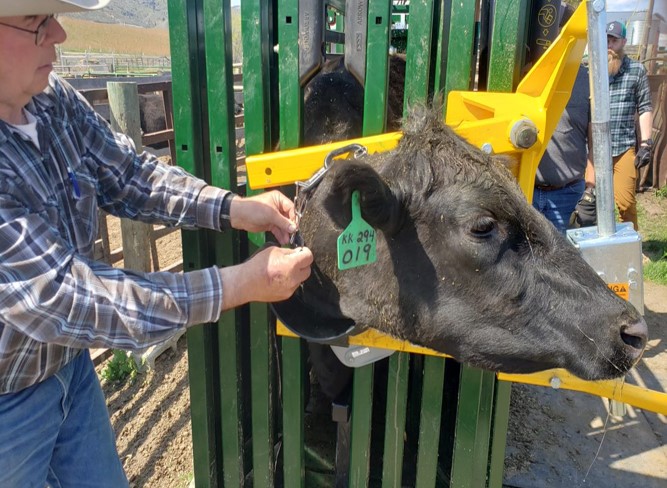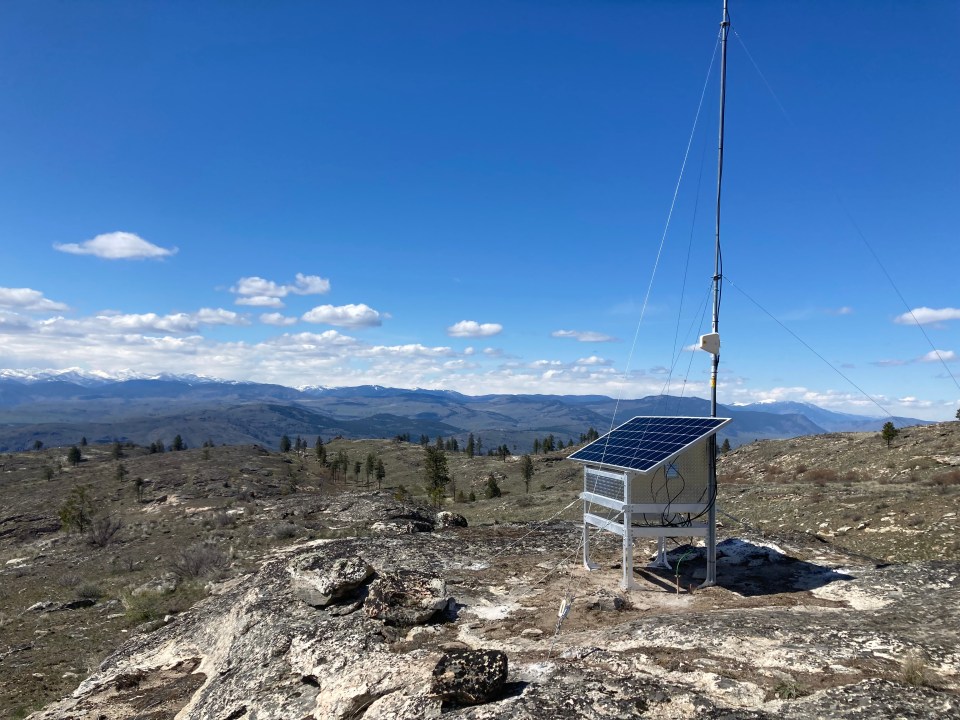
You Don’t Have to Be a Computer Expert to Use Vence
“Getting started with Vence takes some legwork, but it’s not rocket science,” says Caleb Berquist, a cow-calf producer based in eastern Washington. His family uses virtual fencing technology on the home ranch as well as in Idaho’s mountainous terrain.
The virtual fencing technology using on-property base stations and CattleRider collars to track and control animal movement has been especially invaluable for the 300 cow-calf pairs the family runs on a 12,000-acre open range permit near Weippe, Idaho.
“There’s a learning curve to setting up the base model, but once that’s done, you can shift focus to turning fences on and off and tracking animals,” Berquist says. He expects the process to become easier for him and the herd each year.
Establishing boundaries
Establishing virtual fence boundaries on the Berquist’s family’s ranch in Washington was simple. “I could trace old fencelines and see our land and its landmarks,” he says.
Setting those boundaries in Idaho’s mountains presented more of a challenge. “I could set a straight line, but within that it was hard to tell if there were ridges or not,” Berquist says. “After the first year, I know there are places where I need to move boundaries a bit farther down the hill or away from a stream.” Easy access to the Vence team was invaluable for navigating the new system and optimizing it for his ranch.
Brice Lewis is another livestock producer with challenging terrain. He grazes around 150 cows year-round on 15,000 acres of unfenced, timbered, and hilly terrain on the east side of the Continental Divide in central Colorado.
“I’m not a computer guy,” Lewis admits. But thanks to repetition and support from the Vence team, he’s now comfortable with the system. “We communicate and brainstorm often,” Lewis says. “It’s been a great relationship.”
Ongoing support and two-way communication
Virtual fencing technology enabled Joy and Mike Wilson to expand their cow-calf operation in north-central Washington. Two years ago, the couple picked up roughly 9,000 acres of leased ground, most of which was unfenced.
“Erecting the fencing needed to rotational graze 9,000 acres would cost a fortune, and require more time than we have,” says Joy Wilson. “Virtual fencing has made it possible to manage those new acres.” Read more about how producers have used Vence to grow their operations and the cost of adoption.
The Wilsons picked up the lease in December 2021, and had to be up and running by May 1 the following year. “Vence worked with us to meet that deadline,” Wilson says. “We were the first ranch in the state to adopt virtual fencing, so we spent a lot of time working with the Vence team making sure they understood and could meet our needs,” she says.
Account for herd mentality
“Virtual fencing is a management tool, but it isn’t an end-all,” Lewis says, noting it’s important that a cow’s nature factors into use of the system. “I move cattle every two to three weeks. That seems to be how long I can keep a cow’s attention. If they graze an area longer than that, they start getting bored and pushing the boundaries hard – whether it’s a physical or virtual fence.”
A holistic management tool
Getting the most out of Vence requires training, planning and a hands-on approach to the management system. “You have to be deliberate with Vence training,” says Mike Wilson. He trained his cow-calf pairs on a 600-acre pasture for two weeks before turning them out onto a 2,000-acre pasture. “We expected to be riding every day, putting cattle back in their invisible pasture, but we had zero breaches.”
“You have to commit to the Vence system,” says Nat Ruth, who uses Vence technology on a South Carolina plantation to implement patch-burn grazing and manage wildlife. “If you have 20 cows, you can’t put it on 5 of them and expect it to work.”
Success with Vence also requires good management. “Know where the cows are and where they’re supposed to be. Know the timing of turning Vence lines on and off. Make sure someone takes ownership of the data and uses it to plan for the future,” Ruth advises.
Lewis also looks at Vence from the lens of a whole-management scheme rather than a quick fix for a problem. “Yes, you can fix a problem using Vence,” he says, “but doing so takes time, planning and training.”
It’s also important not to take on too much too quickly, according to Lewis. “Start slow and learn your capabilities, your terrain and the program,” he advises. “After you get your feet on the ground, you can start managing more intensively.”
When a cow approaches a virtual fence boundary, its collar emits audio beeps that warn it to turn back.

Mike Wilson collars cattle before spring turnout.

Base stations are installed at strategic locations around the property. They enable the components of Vence’s system to communicate with one another.
